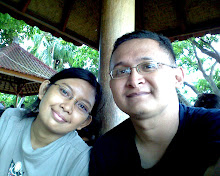 The Yogyakarta pillar was a pillar or the tower that often was used as the symbol/land mark from the Yogyakarta city. This pillar was built by Sultan Hamengku Buwana I, the founder of the Yogyakarta palace. The pillar that was located in the intersection of Street Jenderal Sudirman and Street Prince Mangkubumi this, had the symbolic value and was the line that was magical connected south sea, the Jogja palace and Mount Merapi. When carrying out meditation, it seems Yogyakarta Sultan at that time used this pillar as the standard of the direction appeared the Mount Merapi peak.
The Yogyakarta pillar was a pillar or the tower that often was used as the symbol/land mark from the Yogyakarta city. This pillar was built by Sultan Hamengku Buwana I, the founder of the Yogyakarta palace. The pillar that was located in the intersection of Street Jenderal Sudirman and Street Prince Mangkubumi this, had the symbolic value and was the line that was magical connected south sea, the Jogja palace and Mount Merapi. When carrying out meditation, it seems Yogyakarta Sultan at that time used this pillar as the standard of the direction appeared the Mount Merapi peak.This pillar now is one of the Yogya tourist attractions, and is often known with the "pillar" term "pal white" (pal also meant the pillar), because the colour of the paint that had been used since long ago was the white colour. The pillar pal this had the shape of the ellipse with the small ball and the pointed tip on the top. From the Yogyakarta palace if we saw to the north, then we will find that Street Malioboro, Street Mangkubumi, this pillar, and Street Monument Yogya Kembali will form one straight line precisely with the direction to the Mount Merapi peak. (Taken from http://id.wikipedia.org/wiki/Tugu_Yogyakarta)
Here’s some of the Yogyakarta pillar photo:
The Yogyakarta pillar at day :

The Yogyakarta pillar at night :







































